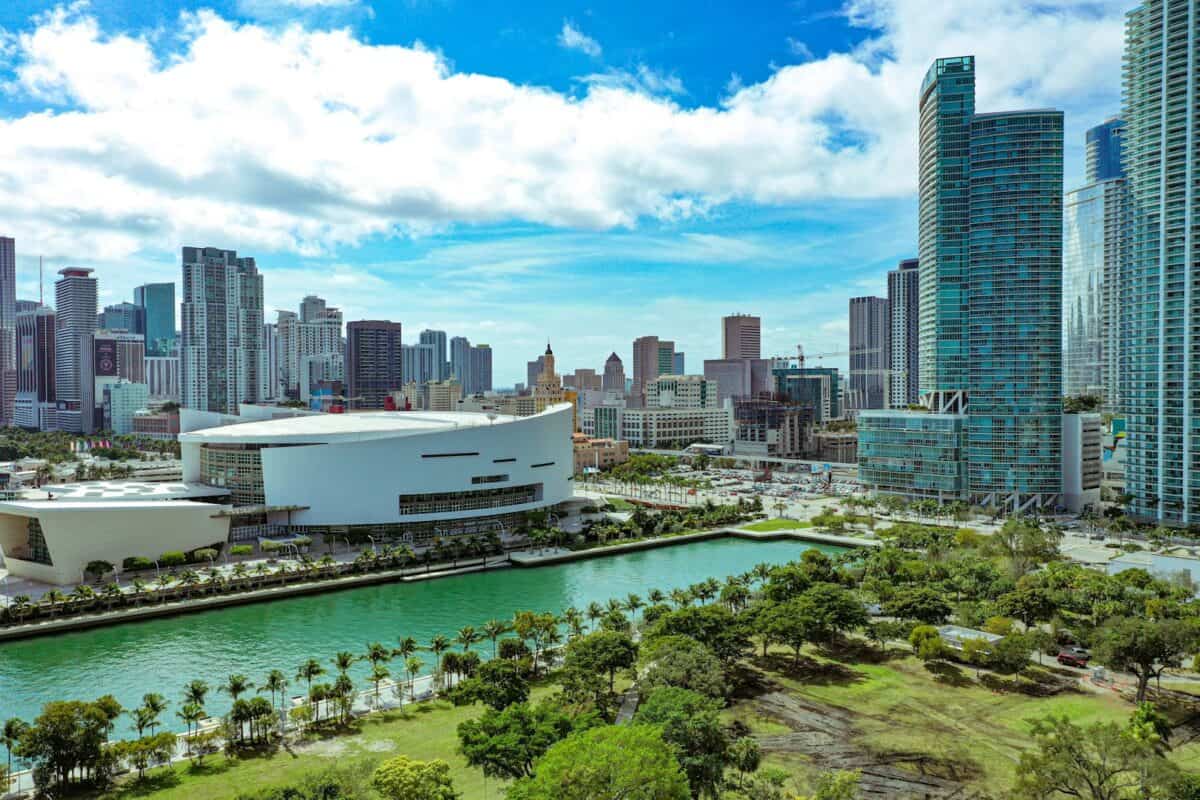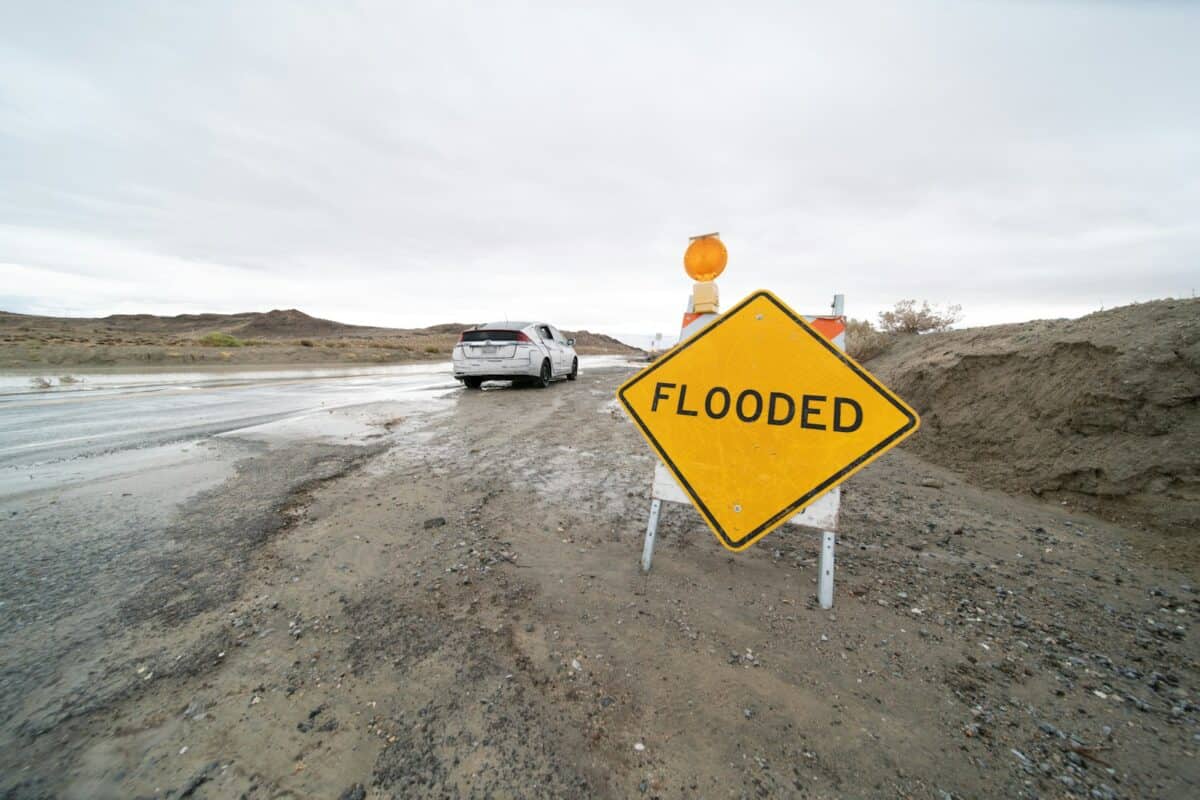Miami, with its vibrant culture, beautiful beaches, and iconic skyline, faces an existential threat that grows more serious with each passing year. The Magic City, built largely on low-lying limestone at the southeastern tip of Florida, stands at the frontline of climate change in the United States. Scientific projections suggest that by mid-century, substantial portions of Miami could become uninhabitable due to rising sea levels. This isn’t a distant apocalyptic scenario but a real, measurable threat based on current data and observed trends. The city’s relationship with water—once its greatest asset—may become its greatest challenge, forcing difficult questions about adaptation, retreat, and the very future of one of America’s most dynamic urban centers.
Miami’s Vulnerable Geography

Miami sits on a foundation of porous limestone that makes it uniquely vulnerable to sea level rise. Unlike other coastal cities that can potentially build seawalls to keep water out, Miami’s bedrock allows water to seep up from below. The city’s average elevation is only about 6 feet above sea level, with many neighborhoods situated at even lower elevations. This topography creates a double threat: not only can water overtop coastal barriers during storms, but it can also infiltrate through the ground itself, emerging through storm drains and even bubbling up through floors during particularly high tides.
The geology beneath Miami acts like a sponge, absorbing seawater and allowing it to rise through the limestone during high tides and storms. This phenomenon, already visible during “sunny day flooding” events, compromises infrastructure, contaminates freshwater supplies, and makes traditional flood control measures less effective than they would be in cities built on less permeable foundations. This unique geological challenge means that Miami must confront rising seas not just at its shores but throughout its urban expanse.
The Current Rate of Sea Level Rise

Scientific measurements from tide gauges and satellite data show that sea levels around Miami have risen approximately 4-6 inches since 1996. However, the rate of rise is accelerating. While the global average for sea level rise is about 3.3 millimeters per year, the rate along Florida’s southeastern coast is notably higher at approximately 5 millimeters annually. This seemingly small difference compounds significantly over time and represents a 60% faster rate than the global average.
The National Oceanic and Atmospheric Administration (NOAA) maintains long-term records showing that sea level rise has accelerated in recent decades. Analysis of these records indicates that the rate of rise in the 2010s was more than twice what it was in the 1990s. This acceleration is primarily attributed to increasing ice melt from Greenland and Antarctica, along with the thermal expansion of ocean water as it warms. For Miami, these global trends are exacerbated by regional factors, including changes in the Gulf Stream’s behavior that push more water toward Florida’s coastline.
Scientific Projections for 2050

According to the 2022 Sea Level Rise Technical Report produced by NOAA and other federal agencies, Miami can expect between 10 to 14 inches of additional sea level rise by 2050 compared to 2020 levels. This projection represents an intermediate scenario that many scientists consider conservative. More aggressive forecasts suggest up to 20 inches by mid-century if ice sheet melting continues to accelerate beyond current models.
These projections carry profound implications for Miami’s habitability. With just one foot of sea level rise, approximately 20% of Miami-Dade County could experience regular flooding during high tides. At 18 inches, that percentage nearly doubles. The most vulnerable areas include Miami Beach, parts of downtown Miami, Coconut Grove, and low-lying communities throughout Miami-Dade County. Current projections suggest that by 2050, what were once considered “100-year floods” could occur annually in many parts of the metropolitan area, dramatically altering the livability and insurability of affected neighborhoods.
The Economic Stakes

The potential economic impact of sea level rise on Miami represents one of the largest climate-related financial risks in the United States. Miami-Dade County has property values exceeding $500 billion, with billions in real estate development concentrated in vulnerable coastal areas. A 2020 study by First Street Foundation estimated that Florida could lose $152 billion in property value by 2050 due to flood risk, with Miami-Dade County bearing a disproportionate share of these losses.
Beyond direct property damage, rising seas threaten Miami’s tourism industry, which generates over $18 billion annually and supports 144,800 jobs. Infrastructure damage, including impacts to roads, the port of Miami, water treatment facilities, and other critical systems, could cost taxpayers billions in repairs and adaptations. Financial experts warn that long before buildings are physically underwater, a “climate value depression” could erode property values and municipal tax bases as flood insurance becomes prohibitively expensive or unavailable, triggering a potential real estate market collapse in the most vulnerable areas.
Sunny Day Flooding: A Growing Reality

Miami already experiences what locals call “sunny day flooding” or “nuisance flooding,” where seawater pushes up through storm drains and permeates through the limestone during high tides, even without rain or storms. In parts of Miami Beach, streets can become impassable multiple times per month during king tides (especially high tides that occur during full and new moons). These events have increased by 400% since 2006 according to NOAA data.
By 2050, projections suggest that areas like Miami Beach could experience flooding on more than 150 days per year, effectively making parts of the city regularly uninhabitable. This persistent flooding doesn’t just inconvenience residents—it corrodes infrastructure, contaminates soil with salt, damages vehicles, disrupts businesses, and gradually renders affected areas unsuitable for normal urban life. The psychological toll of living with such regular intrusions of water also impacts community well-being and mental health, creating what researchers call “climate anxiety” among residents who witness their neighborhoods slowly transforming.
Fresh Water Contamination Threats

Perhaps less visible but equally concerning is the threat to Miami’s drinking water supply. The Biscayne Aquifer, which provides drinking water to millions in South Florida, sits just beneath the surface and is already experiencing saltwater intrusion as rising sea levels push salty water inland. By 2050, projections suggest that significant portions of the aquifer could become too saline for human consumption without expensive treatment.
Water treatment facilities themselves are vulnerable to flooding and salt corrosion. Miami-Dade’s water infrastructure, much of it designed and built before sea level rise was understood as a threat, includes pumping stations and treatment plants in low-lying areas. As groundwater rises, these systems face increasing operational challenges. Engineers warn that by mid-century, maintaining clean water supplies will require billions in new infrastructure investments, potentially including relocating treatment facilities to higher ground and implementing more advanced desalination technologies, which would substantially increase water costs for residents.
Adaptation Efforts Currently Underway

Miami has not stood idle in the face of these challenges. The city has implemented one of the most ambitious climate adaptation programs in the United States. Miami Beach has already invested more than $650 million in raising roads, installing stormwater pumps, and elevating sea walls. The Miami Forever Bond, approved by voters in 2017, allocated $192 million specifically for flood protection and sea level rise mitigation projects throughout the city.
Miami-Dade County has established resilience standards requiring new construction to account for future sea level rise, including elevated minimum floor heights and more robust stormwater management systems. The Southeast Florida Regional Climate Change Compact, which includes Miami-Dade and neighboring counties, coordinates adaptation efforts across jurisdictional boundaries. These initiatives demonstrate that local leaders recognize the threat and are taking steps to address it, though questions remain about whether these measures will be sufficient to meet the accelerating challenge of rising seas by mid-century.
The Limits of Engineering Solutions

Despite aggressive adaptation efforts, engineering solutions face significant limitations in Miami’s unique environment. Traditional defensive measures like seawalls prove less effective because water can simply seep through the porous limestone beneath them. Pumping systems, while helpful during acute flooding events, require enormous energy inputs and eventually become overwhelmed as base water levels rise. Additionally, these mechanical systems are themselves vulnerable to power outages during storms—precisely when they’re most needed.
Even the most ambitious engineering projects can only manage water to certain thresholds. The U.S. Army Corps of Engineers has proposed a $6 billion plan to build a 20-foot seawall across parts of Biscayne Bay to protect downtown Miami, but experts point out that such a wall would not address groundwater infiltration and could destroy the ecological systems that make Miami’s waterfront attractive. As one hydrology expert from the University of Miami put it, “We can’t simply engineer our way out of this problem. At some point, the water wins.” This recognition is leading to difficult conversations about managed retreat from the most vulnerable areas—a politically challenging but potentially necessary component of long-term planning.
Climate Justice and Vulnerable Communities

Sea level rise in Miami presents not just environmental and engineering challenges but social justice concerns as well. Not all Miamians face equal risk or have equal resources to adapt. Historically, wealth in Miami has concentrated along the waterfront, but the dynamics of climate vulnerability are creating new patterns of inequality. While wealthy neighborhoods can invest in private adaptation measures, lower-income communities often lack resources for property-level improvements or relocation.
As flooding worsens, researchers have identified a troubling pattern they call “climate gentrification,” where investors purchase property in historically lower-income areas at higher elevations, displacing long-term residents. Neighborhoods like Little Haiti and Liberty City, traditionally more affordable and situated on slightly higher ground, have seen rapid property value increases partly attributable to their reduced flood risk. Meanwhile, essential workers who support Miami’s economy increasingly struggle to find safe, affordable housing. By 2050, without intentional policies to protect vulnerable populations, climate change could exacerbate existing social inequities, potentially reshaping Miami’s demographics as dramatically as its physical landscape.
Insurance and Real Estate Market Impacts

The insurance industry may ultimately determine Miami’s fate before physical inundation becomes widespread. Florida already faces an insurance crisis, with many private companies withdrawing from the market or dramatically increasing premiums due to hurricane risks. Sea level rise compounds these challenges. A 2019 report by the Union of Concerned Scientists predicted that by 2045, more than 64,000 homes in Miami-Dade County, worth $26 billion, will face chronic flooding, making them effectively uninsurable on the private market.
When insurance becomes unavailable or unaffordable, property values collapse, mortgage lending freezes, and the tax base that funds adaptation measures erodes. Some financial analysts have warned of a potential “coastal real estate bubble” that could burst well before mid-century as markets begin to price in future flood risks. Freddie Mac’s chief economist has called rising sea levels “a potential housing crisis for coastal areas more severe than the Great Recession.” This financial reality means that parts of Miami could become economically uninhabitable—where buildings physically remain but become financially nonviable—long before they are physically underwater.
The Role of Climate Change Mitigation

While adaptation efforts are crucial for Miami’s immediate future, the city’s long-term viability depends significantly on global climate change mitigation. The difference between moderate and extreme global emissions scenarios could mean feet, not inches, of additional sea level rise by the end of the century. Under high-emissions scenarios, Miami could face up to 6.5 feet of sea level rise by 2100, which would submerge the majority of the current metropolitan area.
This reality has made Miami an unexpected leader in climate advocacy. The city has adopted ambitious goals to reduce its own carbon footprint, including plans to achieve carbon neutrality by 2050. Mayor Francis Suarez has been outspoken about the need for national and international climate action, recognizing that local adaptation can only succeed within the context of global emissions reductions. For residents contemplating Miami’s future, the policies set in world capitals and the success of international climate agreements may ultimately prove as important as local adaptation measures in determining whether Miami remains viable beyond mid-century.
Miami Reimagined: Planning for 2050 and Beyond

Facing these challenges, urban planners, architects, and community leaders are reimagining what a climate-adapted Miami might look like by mid-century. Some envision a “Venice of America,” with elevated buildings connected by waterways and pedestrian bridges, embracing rather than fighting the encroaching water. Others advocate for “sponge city” designs that incorporate more green infrastructure to absorb stormwater and reduce urban heat islands simultaneously.
The Urban Land Institute has worked with Miami to develop concepts for floating neighborhoods and amphibious architecture that can rise with water levels during flood events. Universities in Florida are researching building materials that can withstand regular saltwater exposure and developing new construction techniques appropriate for increasingly flood-prone environments. These innovations suggest that while Miami of 2050 may look very different from today’s city, creative adaptation could allow it to maintain its identity and function even as water becomes a more dominant feature of the urban landscape.
The Future of Miami: Challenges and Possibilities

The question posed in this article’s title—”Could Rising Oceans Swallow Miami by Mid-Century?”—has no simple answer. Physical inundation of the entire city is unlikely by 2050, but substantial portions will face chronic flooding that renders them functionally uninhabitable without dramatic intervention. The greater threat by mid-century may come from economic and infrastructure challenges rather than complete physical submersion. As insurance retreats, fresh water becomes compromised, and infrastructure fails, livability could deteriorate well before buildings are literally underwater.
Yet Miami has advantages that shouldn’t be overlooked. The city possesses substantial wealth that can be directed toward adaptation, innovative leadership that has acknowledged the challenge, engaged communities developing grassroots solutions, and some of the world’s leading experts on climate adaptation working to address these challenges. The coming decades will test Miami’s resilience, creativity, and social cohesion. While parts of today’s Miami may indeed be “swallowed” by rising seas, the city itself will likely endure in some form—though transformed by its response to one of the greatest environmental challenges any American city has faced. How successful that transformation will be depends on decisions made today by residents, leaders, and global society about how seriously to take the threat of climate change and rising seas.
- Could Rising Oceans Swallow Miami by Mid-Century? - August 13, 2025
- You’ve Heard Daddy Longlegs Are the Most Venomous Spiders, But That’s Not True - August 13, 2025
- The Fastest Land Animal You’ve Never Heard Of (It’s NOT a Cheetah!) - August 13, 2025

